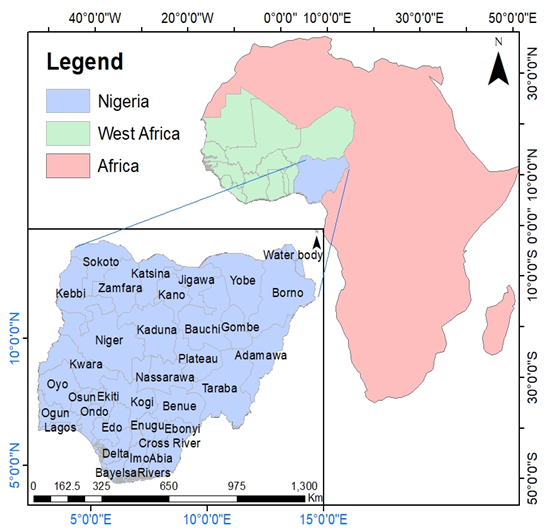Suitability Analysis for Yam Production in Nigeria using Satellite and Observation Data
Keywords:
Analytical hierarchy process, Yam production, Nigeria, NDVI, Yield gap, Multi-criterion decision makingAbstract
Identification of suitable areas for yam production is critical for ensuring yield in yam production in Nigeria. The study is aimed at determining suitable lands for yam production in Nigeria. Climate, soil, and environmental parameters that have a high contribution to yam production were used in developing a yam production suitability map using the Analytical Hierarchy Process (AHP). The AHP was used in deriving weights through a pairwise comparison technique. According to the findings, highly suitable (HS), suitable (S), marginally suitable (MS), and not suitable (NS) regions accounted for 11.79, 82.68, 4.05, and 1.47% of the study area, respectively. The Normalized Difference Vegetation Index (NDVI), a measure of vegetation vigor, was higher in HS, followed by S regions, and then MS regions. Similarly, climate variables in HS regions were more favorable for plant growth, followed by S regions and MS regions. The correlation between precipitation and temperature is high and significant only in the HS class, despite the fact that NDVI and climate variables are significantly connected in all the suitability classes. The output map, thus determined, provides information on highly suitable, suitable or marginally suitable lands that are of practical importance to agriculturists.

Published
How to Cite
Issue
Section
Copyright (c) 2022 Tertsea Igbawua, Martha Hembafan Gbanger, Fanan Ujoh

This work is licensed under a Creative Commons Attribution 4.0 International License.
How to Cite
Most read articles by the same author(s)
- Tertsea Igbawua, Aondongu Alexander Tyovenda, Terver Sombo, Idugba Mathias Echi, Spatio-temporal assessment of aerosol-induced atmospheric heating rates in Nigeria , Journal of the Nigerian Society of Physical Sciences: Volume 7, Issue 2, May 2025







